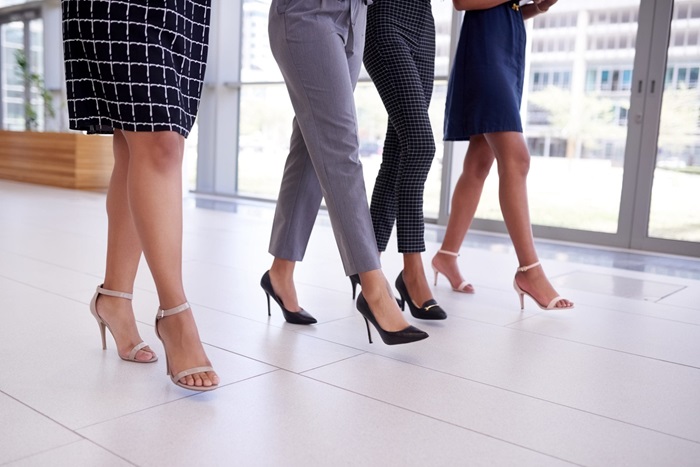Are High Heels Bad For Your Health?

November 08, 2019
High heels may add a lovely, long line to an outfit, but they can wreak havoc on your body. Not only can they cause painful problems in your feet and ankles, but they can harm your knees, hips and spine, as well.
“High heels aren’t going anywhere,” says Eric Baskin, DPM, a podiatrist at Southern Ocean Medical Center. “So until the fashion industry phases them out, they’re going to affect people for generations.”
How High Heels Affect Your Feet
Because high heels shift your body weight forward, the ball of your foot and your toes are responsible for absorbing all the pressure when you walk or stand. This can lead to bunions, hammer toes, callouses and pain throughout the foot.
“High heels create a shock wave though your body, starting at your feet and traveling up into your spine,” Dr. Baskin says. “They can throw off your posture and gait, and even cause arthritis in the spine.”
Long-term use of high heels can lead to another problem: a shortened Achilles tendon. A tight Achilles tendon is linked to plantar fasciitis and Achilles tendonitis. High heels can also aggravate a deformity called Haglund’s, which is a bony enlargement on the back of the heel typically referred to as “pump bump.”
How to Ease Your Pain
If you, like many others, insist that beauty demands some suffering, here’s what you can do to help your aching feet.
Stretch your foot: Dr. Baskin recommends stretching your Achilles tendon twice a day—before you wear heels and after—for 15 minutes each time. “There’s nothing complex about these stretches,” he says. “It’s the same ones you probably learned in gym class as a kid.”
- Put both hands on the wall in front of you.
- Send one leg back and press your heel down toward the floor.
- Keep a slight bend in your standing knee, and hold for a minute or two.
- Switch legs.
Limit the amount of time you wear heels: “Wear them at work or to social functions, but not all the time,” Dr. Baskin says. “And whenever you can, wear sneakers.”
Use orthotics: Orthotics can distribute forces on the foot more evenly. You could give store-bought insoles a try, but Dr. Baskin says that nothing tops a custom-fit orthotic.
Soak your feet: At the end of a long day in heels, soak your feet in a warm Epsom salt bath to relax the muscles in your feet and improve circulation. It also just feels good. “I’ve honestly never had a patient who said that an Epsom salt soak didn’t make them feel better,” Dr. Baskin says.
Wear shoes that fits properly: Many people do not wear the appropriate size shoe, Dr. Baskin says, so be sure you’re wearing a pair that fits properly. If you must, size up. It’s better to wear shoes that are slightly too large than too small.
Opt for shorter heels: The height of the heel matters. When a heel tops the 2-inch mark, more problems tend to occur.
Whatever height your heel, if you feel a sudden onset of pain that lasts for more than two weeks, or you see any sudden structural changes in your toes or feet, it’s time to call your doctor.
The material provided through HealthU is intended to be used as general information only and should not replace the advice of your physician. Always consult your physician for individual care.
Find a doctor near me
Tinnitus Patient Finally Finds Peace and Quiet

Find lasting tinnitus relief. Anna Callahan overcame constant ringing with innovative treatments at JFK Johnson Rehabilitation Institute. Learn how to manage your tinnitus today.
Two Surgeries, Two Successes

Two Surgeries, One Recovery. Jean Crenshaw shares her successful experience. Learn about coordinated cancer & foot care at Riverview Medical Center. Call 800-822-8905.
Find a doctor near me

Protect Yourself From Golfers’ Wrist
Prevent golfer's wrist pain. Learn how to manage and avoid this common golf injury with expert advice from orthopedic surgeons. Find relief today.

All About Thyroid Cancer
Understand thyroid cancer. Learn about symptoms, detection, and treatment options from leading doctors. Schedule an appointment today.

Overcoming Quarantine Anxiety
If you are feeling anxious or burnt out from COVID-related stress and isolation, you aren’t alone.

What Is Frozen Shoulder, and Can You Prevent It?
Pain that makes you hesitate to use your shoulder may be a sign of a condition known as frozen shoulder.
